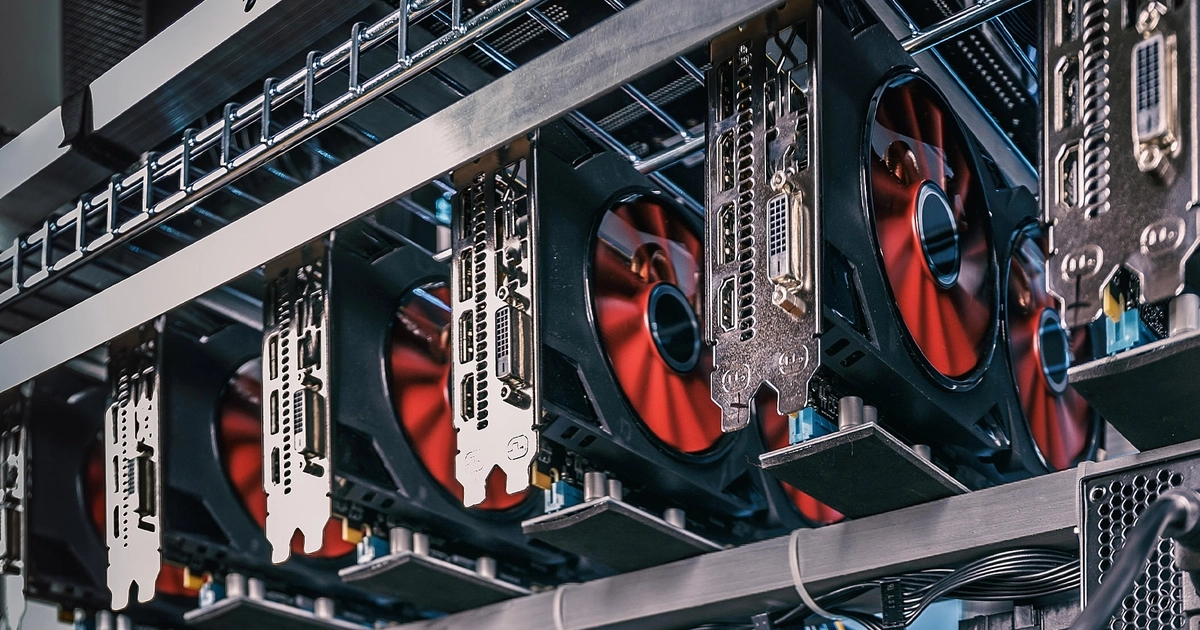
Following the Bitcoin reward halving earlier this year, which reduced mining profits by 50%, many cryptocurrency miners are turning to artificial intelligence (AI) business models.
In light of the cryptocurrency market’s volatility, Bitcoin miners are adapting their existing infrastructure to serve the data storage and computing needs of the AI sector. This transition not only provides a more stable and predictable revenue stream for firms operating in the mining industry, but it could also yield substantial benefits for the wider technology landscape.
Energy has become a critical commodity in the AI industry due to the soaring demand for heavy-duty computing capacity. This is driven by AI applications such as ChatGPT, which reportedly require 10 times more energy than a standard Google search.
To address this growing demand, AI companies are actively on the hunt for affordable power sources and large expanses of land for data centers. Having sufficient power available now is vital when considering it takes years to build high-performance computing (HPC) data centers from scratch, with current wait times for electrical-grid connections extending up to six years.
In the industry’s favor, Bitcoin miners’ expertise in leveraging advanced equipment and securing substantial, low-cost energy makes them highly valuable partners for powering AI-driven data centers.
In Bitcoin’s early days, miners discovered that expanding their computer rigs significantly boosted their profits, leading them to build vast server farms that harnessed cheap energy sources and operated around the clock – this is the scale that the AI industry is now seeking.
Additionally, the advanced infrastructure developed by some Bitcoin miners, originally designed to solve complex cryptographic puzzles, is equally capable of handling the computationally intensive tasks required by AI. While not all mining rigs meet the standards of data center-grade infrastructure, more advanced miners have a proven track record deploying state-of-the-art technologies and engineering solutions like direct-to-chip cooling to get the best possible performance out of hardware. This capability enables Bitcoin miners to diversify their revenue streams and maximize returns on their investments.
Many mining companies are already capitalizing on this opportunity. For example, Core Scientific (CORZ) has announced a partnership to host over 200 MW of graphic processing units (GPUs) for the AI startup CoreWeave. This contract is expected to generate net profits of approximately $3.78 billion, reflecting a 71% return. It’s clear that such collaborations can be a win-win situation as AI companies benefit from the infrastructure Bitcoin miners provide, while miners gain from the stability and potential profitability of AI computing revenue amid the current AI boom.
With AI-driven data centers expected to account for 3% of the nation’s electricity by 2026, and Bitcoin mining already consuming up to 2.3% of the nation’s electricity, their combined impact could lead to even greater energy demands and environmental consequences.
Together, these two sectors could significantly strain the power grid and contribute to increased carbon emissions. In fact, the International Energy Agency (IEA) reported that data centers in the US will consume twice as much electricity by 2026, largely driven by the demands of cryptocurrency mining and AI.
To reduce these risks and ensure a sustainable partnership, Bitcoin mining operations need to invest in renewable energy sources, including wind, solar, and hydroelectric power. New research suggests that integrating Bitcoin mining with green hydrogen could facilitate a faster transition to clean energy, potentially increasing the capacity of solar and wind power installations by up to 73%.
AI technologies can also play a crucial role in enhancing sustainability by optimizing renewable energy usage, dynamically adjusting energy sources based on availability and cost to reduce carbon footprints.
Notably, Bitcoin miners have experience leveraging renewable energy sources and demand response programs to deliver enhanced grid stability.
As a uniquely curtailable load, Bitcoin mining is suited to active power management. This improves grid stability and helps support the usage of intermittent energy sources such as wind and solar. Flexible usage means renewables can be maximized, rain or shine.
While some AI workloads are not curtailable to the same extent, the strategies and relationships developed by miners can help them ensure grid stability even as their overall energy usage increases.
As Bitcoin mining evolves to support AI’s data and computing needs, prioritizing sustainability is essential. At the same time, we must not overlook the importance of establishing and adhering to regulatory frameworks.
By implementing effective regulations, we can balance innovation with sustainable practices reasonably, ensuring technological advancements do not come at the expense of the environment. For instance, Germany has been at the forefront of enacting regulatory frameworks like the German Energy Efficiency Act. This legislation introduced new rules on energy efficiency, energy reuse, power supply from renewable energies and energy management systems – all intended to make the operation of data centers more sustainable.
Implementing similar regulations that align technological advancements with sustainable practices can significantly help alleviate strain on the power grid and reduce energy consumption, while ensuring that growth benefits both the energy sector and broader business objectives.
Ultimately, achieving sustainability in AI-driven and Bitcoin mining operations requires a collaborative effort between government and industry players. As these new partnerships develop, they promise benefits for both sectors. However, we must remain committed to reducing energy consumption and mitigating the impact on the power grid. By working together, we can ensure that these technological advancements drive progress while also supporting environmental stewardship.
LowEndBox is a go-to resource for those seeking budget-friendly hosting solutions. This editorial focuses on syndicated news articles, delivering timely information and insights about web hosting, technology, and internet services that cater specifically to the LowEndBox community. With a wide range of topics covered, it serves as a comprehensive source of up-to-date content, helping users stay informed about the rapidly changing landscape of affordable hosting solutions.
























Leave a Reply